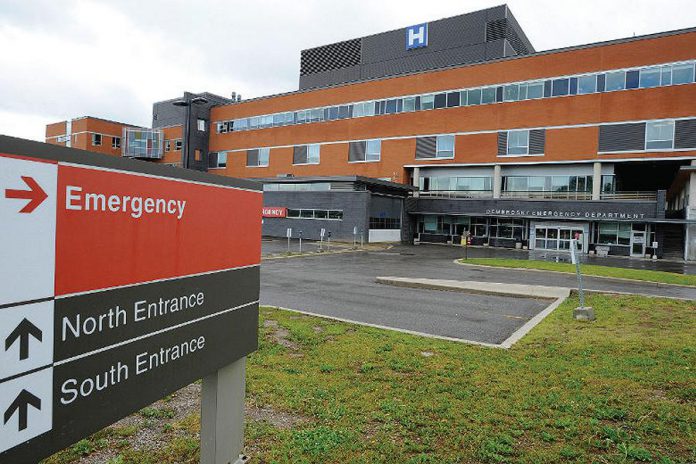
A seasonal surge in respiratory illness is putting a strain on the Peterborough Regional Health Centre (PRHC), “with a large number of patients with more serious and complex illnesses” that require “a higher level of care.”
That’s the word from hospital president and CEO Dr. Lynn Mikula who, during a media briefing on Wednesday (November 15), said the hospital’s in-patient medicine beds were at 105 per cent occupancy.
“In the first week of November, emergency department visits for respiratory illness were more than 40 per cent higher than they were in the first week of October,” she added.
“Pediatric emergency department visits for respiratory illness were 26 per cent higher in the first week of November and visits to the pediatric outpatient clinic increased by 69 per cent, with 127 visits in the first week of October and up to 215 visits in the first week of November,” Dr. Mikula said.
Asked by kawarthaNOW how much more patient care pressure PRHC can handle, Dr. Mikula said while there’s not an identified breaking point, the hospital is asking for “everyone’s patience” as wait time and access to care pressures increase.
“(Medicine bed occupancy of) 105 per cent is certainly high but it’s actually not that dramatically unusual during a seasonal surge,” she said. “The province directs all hospitals to have plans in place to surge up to 125 per cent bed occupancy and we are prepared to do so.”
COVID-19, noted Dr. Mikula, “is very much a factor” in the respiratory illness surge.
“Peterborough Public Health’s (COVID-19) risk rating for our community is currently at high. Within the hospital, we are seeing COVID-19 activity. We’re seeing patients admitted with COVID. COVID is very much with us. We’re recommending everyone get not only a flu shot but also a COVID vaccine this winter.”
“PRHC continues to have visiting restrictions in place, including masking in patient rooms and in all other areas of the hospital where patients are receiving care. If in doubt, please wear a mask to protect yourself and others. If you’re experiencing symptoms of illness, delay visiting patients in the hospital until you’re well.”
To help ease the demand on hospital services, Dr. Mikula said “alternative options for care” do exist and “may fit your needs better than the emergency department.”
To find out what those options are, she suggested visiting the hospital’s website at www.prhc.on.ca and to follow PRHC’s social media channels.
Meanwhile, combined with the increase in health care demand is an ongoing PRHC staffing shortage.
“We’re competing against every other hospital in the province that are also implementing aggressive recruitment measures,” said Dr. Mikula. “We do a number of things. We work very closely with Fleming College, with Trent University, and with other training programs to make sure we’re connecting anyone who’s graduating from a program.”
“We’re taking advantage of a number of streams of provincial funding to bring students and recent graduates into the building in a supported manner. We’re also making sure we’re going to health care-related job fairs quite far afield to make sure we’re saying ‘PRHC is hiring and we’re a great place to work and this is a great community to live’.”
That effort has recently paid big dividend as of late.
“In September and October and the first half of November, we have on-boarded 115 nurses,” said Dr. Mikula. “That’s a really big number, but it’s not enough. We have quite a number of nurses who are retiring or looking to work less. It is a job seekers’ market right now. We still have a lot more work to do.”


























